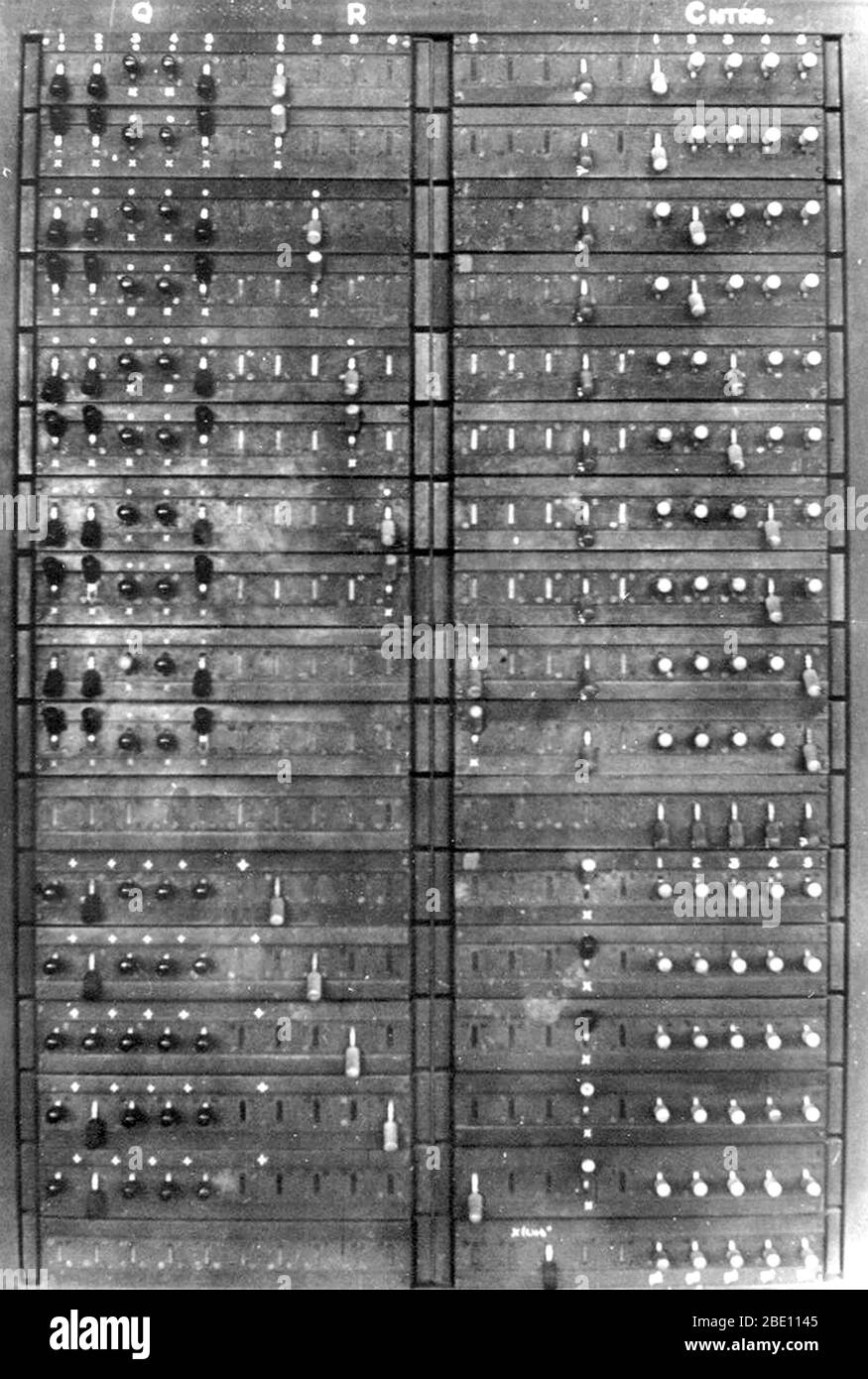Wartime photograph of part of a Colossus computer showing the Q panel, 1945. Colossus was a set of computers developed by British codebreakers in the years 1943-1945 to help in the cryptanalysis of the Lorenz cipher used by the German Army. Colossus used thermionic valves (vacuum tubes) to perform Boolean and counting operations. Colossus is thus regarded as the world's first programmable, electronic, digital computer, although it was programmed by switches and plugs and not by a stored program. Colossus was designed by research telephone engineer Tommy Flowers. Alan Turing's use of probabilit

Image details
Contributor:
Science History Images / Alamy Stock PhotoImage ID:
2BE1145File size:
13.8 MB (619.4 KB Compressed download)Releases:
Model - no | Property - noDo I need a release?Dimensions:
1800 x 2672 px | 15.2 x 22.6 cm | 6 x 8.9 inches | 300dpiDate taken:
14 May 2018Photographer:
Photo ResearchersMore information:
This image could have imperfections as it’s either historical or reportage.
Wartime photograph of part of a Colossus computer showing the Q panel, 1945. Colossus was a set of computers developed by British codebreakers in the years 1943-1945 to help in the cryptanalysis of the Lorenz cipher used by the German Army. Colossus used thermionic valves (vacuum tubes) to perform Boolean and counting operations. Colossus is thus regarded as the world's first programmable, electronic, digital computer, although it was programmed by switches and plugs and not by a stored program. Colossus was designed by research telephone engineer Tommy Flowers. Alan Turing's use of probability in cryptanalysis contributed to its design. It has sometimes been erroneously stated that Turing designed Colossus to aid the cryptanalysis of the Enigma. Turing's machine that helped decode Enigma was the electromechanical Bombe, not Colossus.